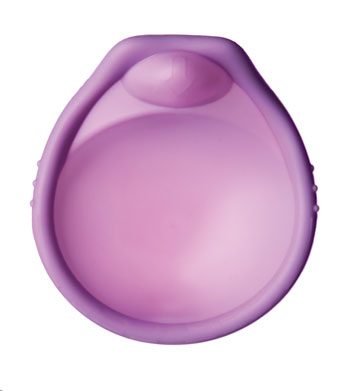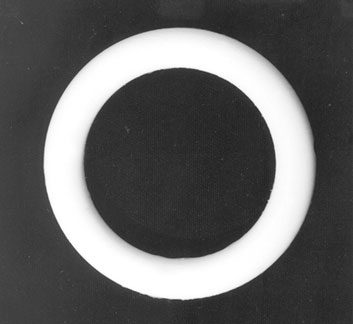
Contraceptive gel
Currently being studied in many countries, the gel is rubbed onto the abdomen daily to suppress ovulation, but doesn’t stop periods. It contains Nesterone, a new form of progestin that does not bind to androgen receptors, so it is less apt than the pill to cause side effects such as acne. It also contains estradiol, a natural form of estrogen. “We did a study and women loved this product,” says Merkatz. A study of thousands of women will be needed before this gel can go on the market.

A one-size-fits-all diaphragm
The SILCS diaphragm is a barrier method of birth control developed by PATH (a global non-profit research organ-ization) in collaboration with CONRAD (a U.S. reproductive health research organization) and the Bill and Melinda Gates Foundation. It was created for women in developing countries who have limited access to contraception and physician care, and is expected to be introduced in Europe in 2012. Once it’s approved there, it will be submitted for approval to Health Canada and to the FDA in the U.S.
Traditionally women had to be fitted by a physician for a diaphragm, but this single-size model fits a broad range of women and wouldn’t require a pelvic exam. It has a removal dome to make it easier to remove (if you’ve ever gone on a search-and-rescue mission for your diaphragm, you know that’s a good thing). It’s best for women who don’t want to use hormonal or permanent methods of birth control and want protection from pregnancy only when they need it. Women who use it will continue to get their period.

A longer-lasting contraceptive ring
The NES/EE contraceptive ring, being developed by the Population Council in New York, is similar to the NuvaRing (see above). But a NES/EE would last one year-the ring is inserted for three weeks, then removed for a week (during which time you’ll get your period); then the same ring is inserted again, and so on. This makes it convenient, says Ruth Merkatz, director of clinical development of reproductive health at the Population Council. Since NES/EE does not require refrigeration prior to insertion-the Nuva-Ring does if not inserted before four months-or insertion by a healthcare provider, it may improve access to birth control for women in the developing world. It’s expected to be available in the U.S. by 2015 and then, if all goes well, in Canada.

A pill for him?
Researchers at the University of California, among others, have been studying hormonal methods that suppress sperm production. “When we give men testosterone, the hypothalamus in the brain decreases testosterone in the testes, which lowers sperm count to prevent pregnancy,” says Dr. Christina Wang, associate director of the UCLA Clinical and Translational Science Institute at the Los Angeles Biomedical Research Institute. UCLA researchers are now exploring the best combination of male hormones with the fewest side effects in the form of a pill, transdermal gel, injections and long-lasting implants. One of these options may be a reality within a decade.
Related:
• What’s new in brith control
• Is it safe to stop your period?
• What causes low sex drive?
